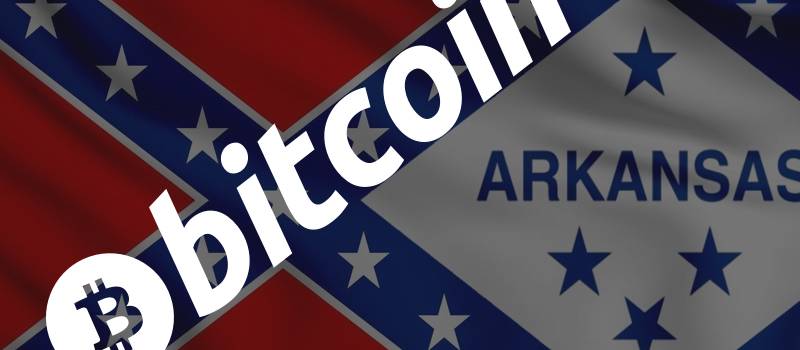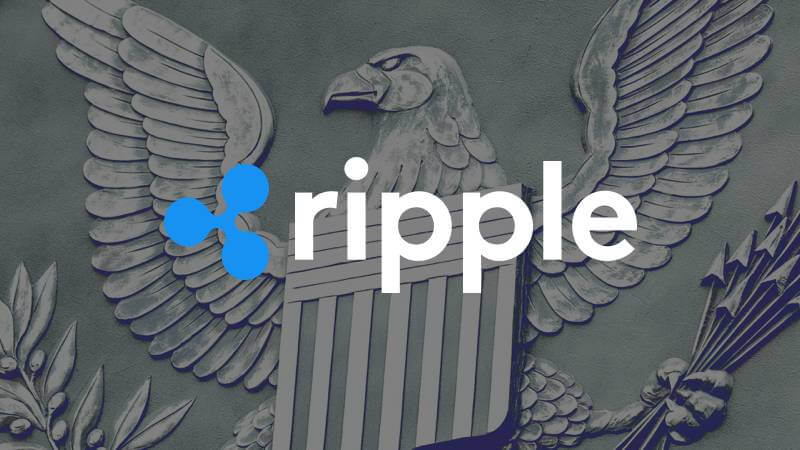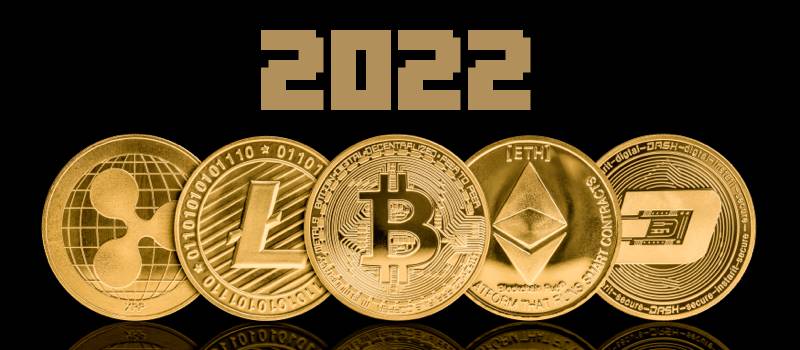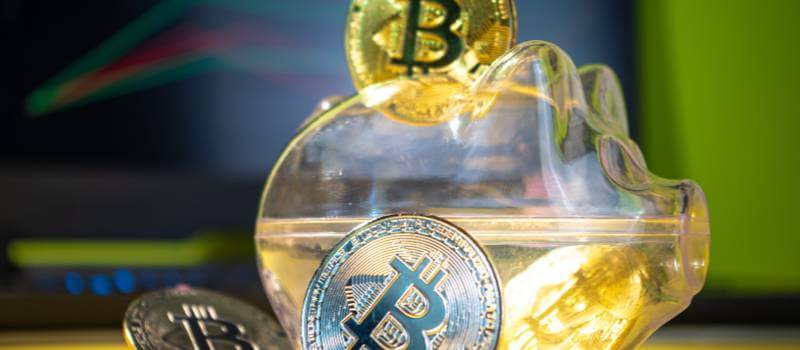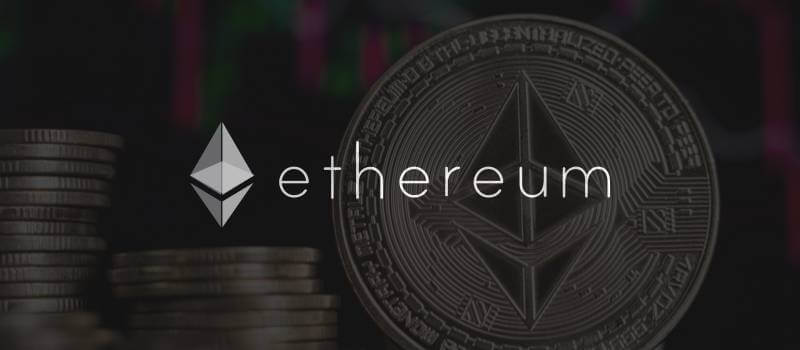January 2022 in Review
January continued the serendipitous slide of crypto, for the most part. It could be that all crypto will return to zero worth, or it could be that crypto will spring to life once again and carry those who have held onto it to the next level of financial security. Many arguments are currently being made which show a clear path to each of those scenarios. We are living in an environment wherein regulators both here and abroad, like most other leaders, seem more concerned about their careers and their own financial interests rather than what is in the best interests of their country or their constituents. Creating divisiveness has always been a tried-and-true tool which politicians and government agents have used to keep people fighting amongst themselves so that they don’t focus their angst against the regulators and leaders. It’s a pity that the citizens do not see this, and they would rather point accusations and fingers at supporters on the other side of the political spectrum.
Remember the next time you get angry at someone from the other side, that this is exactly how your leaders want you to feel. It takes the pressure off that you’ll look into their own misbehavior and wrongdoing, which goes across the board, no matter which side you are on or who your leaders are. The answer is not convincing the other side that your side is right, it is about seeing how citizens, no matter which side they are on, are gullible and therefore, easily manipulated by their leaders. Seeing the truth would make us all better citizens, because therefore, we would then have the ability to elect better leaders. We get what we deserve, so instead of complaining and finding fault with the other side, do your diligence to look into the matters as they are and stop believing the media, controlled as it is by one leader or another.
The month of January got off to a sluggish start … and never really did otherwise. We were told that the lawsuit against Ripple would affect all crypto, and that crypto was set to rebound like never before, then pundits and haters from everywhere gave their best estimates about the price of Bitcoin in 2022. We heard all about El Salvador’s problems with their Bitcoin rollout. Buterin talked about Ethereum 2.0’s completion; sharks, whales, and everyone else hopped on the NFT bandwagon anyway; BitTorrent had a nice little rally for a change; and some advocated that crowdfunding would do better by accepting crypto payments. By the middle of the month, Dorsey had launched a Bitcoin defense fund to protect developers and SHIB was, once again, the hot topic across Twitter and within the huge Indian culture. Meanwhile, Hong Kong set a plan for crypto regulations, and the market volatility just did not quit. Each time we had a rebound, that was followed immediately by fresh lows. What’s next? We’ll just have to wait and see…

FAMOUS CRYPTO INFLUENCER ASKS CRYPTO COMMUNITY TO ROOT FOR RIPPLE, AS RIPPLE’S WIN AGAINST SEC IS A NET POSITIVE FOR THE MARKET
In his recent New Year video labeled “8 Shocking Bitcoin Crypto Predictions for 2022,” famous crypto influencer and investor Lark Davis reaffirms that the SEC lawsuit against Ripple is an attack on crypto in the US. He strongly believes that Ripple’s win against SEC will become a net positive for crypto. Davis comprehensively spoke about what the crypto community could expect in the year 2022, wherein he made eight interesting predictions concerning various topics. One of them is about Ripple, and he told his followers that in his estimation it is Ripple who will emerge as the victor in the SEC-Ripple lawsuit. Reaffirming what Ripple CEO Brad Garlinghouse had remarked about Ripple’s fight against SEC being not for itself only but for the crypto as a whole, Davis suggested that we all (the crypto community) should be “rooting for Ripple to win” as Ripple’s win is a “net positive” for crypto. He went on to affirm his belief that the SEC has been acting like a “school yard bully” lately, and most of the regulators, but specifically the agency’s Chairman Gary Gensler, have taken severe stances regrading crypto, and this limits US investor’s participation in crypto within the country. He added, for instance, the US-based investors are not even allowed to take part in initial coin offerings (or ICOs).
Why could this be so important? Davis projects that if Ripple wins the lawsuit against SEC, it would set a precedent that would be enough to restrict SEC and keep it in place, whereas, on contrary, if the SEC wins, it would bring confidence to the regulators, who will then most likely continue to strike further lawsuits against other cryptos. Recently, upon SEC’s threat of filing a lawsuit against Coinbase, that company had to put on hold the launch of its highly anticipated lending platform. It is to be remembered that it had been all the way back in late December 2021 when the SEC had filed their lawsuit against Ripple. It alleged CEO Garlinghouse, Co-founder Chris Larsen, and the firm itself, sold $1.38 billion worth of XRPs as securities, while the company failed to register XRP as a security with any of the relevant regulators.

ETH/USD Slides Below $4038 Resistance
The Ethereum price chart showed ETH sitting at a crucial support level which could determine where the coin would head if it continued in its current falling pattern. ETH/USD Key Levels: Resistance levels are currently at $4400, $4500, and $4600, with Support levels at $3600, $3500, and $3400. As of the first week of the month, ETH/USD was following in the footsteps of the flagship cryptocurrency BTC, as Bitcoin was seen dropping towards the lower boundary of its own channel. Looking more closely, Ethereum failed to create a new high above its resistance level of $4128. Ethereum (ETH) may go lower from here, since by looking at the daily chart, its price is currently hovering below the 9-day and 21-day moving averages. The increasing selling pressure could potentially bring ETH/USD to test its recent low at about $3850, and it appears that we will not see upward momentum until the red-line of the 9-day moving average crosses above the green-line of the 21-day moving average. If that were to occur, the price of Ethereum could rebound and move consistently to the upside.
Investigating the latest daily charts, if buyers can manage to push the coin to the upside, Ethereum’s price could move towards the upper boundary of its channel, which would be the resistance levels of $4400, $4500, and $4600. It seems more likely that its failure to stay above the moving averages will continue to pressure Ethereum (ETH) to move to the downside. A downward swing may trigger a sell-off below the lower boundary of the channel – at $3600, $3500, and $3400. As the 14-day Relative Strength Index moves to cross below the 40-day level, it is likely for Ethereum to test the supports at $3600, $3500, and $3400. When comparing ETH with BTC, last Wednesday revealed a breakdown on the long channel after continuous selling pressure in the market led to the current downward trend. This pattern reveals that bears might have firm control of the market. It will take buyers to come in to push the market back above the 9-day and 21-day moving averages in order to reverse this current trend.
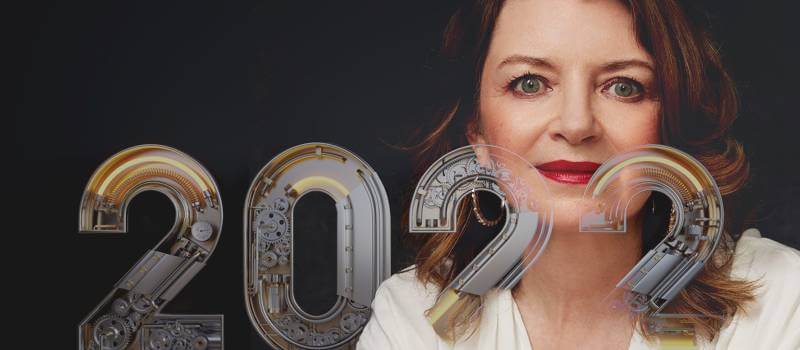
Genesis’ Noelle Acheson on crypto growth in 2022
Crypto saw astonishing institutional growth in 2021, but Genesis’ Noelle Acheson believes adoption is set to accelerate over the next year. While speaking to Joe Kernen during an interview on CNBC’s “Squawk Box,” Noelle Acheson, the head of Market Insights at Genesis Global Trading, stated that she fully expected that the next twelve months will see a continuation of institutional growth within the crypto space. When asked to predict what she thinks will happen in the crypto space next year – whether it be SEC finally approving a spot Bitcoin ETF, major regulatory actions from across the globe, or institutional adoption – she noted that no one can know for sure what will happen. However, she said that 2021 was very “interesting” and that the industry expects a continuation of institutional growth as seen over the past year. “We are seeing strong signs of that accelerating over the next year,” she said, adding that these could be direct investments into crypto or through investments into companies building the crypto market’s infrastructure.
Acheson stated that the crypto space currently has 65 unicorns, which are startup companies whose market valuation is above $1 billion. She noted that 2021 alone saw 40 crypto-focused companies hit unicorn status, with an average of three new firms hitting the billion-dollar valuation every month. Such astonishing growth can only lead to more interest in crypto and blockchain technology, and she said the growth is likely to accelerate interest even as more money flows into the industry. Acheson also talked about institutional interest and its visibility now that investment managers are choosing to diversify into crypto. The former managing director of research at Coindesk told CNBC that the past year saw more institutions add crypto to their portfolios. Even more interesting than that was that many of these institutions went for digital assets outside of the top two (Bitcoin and Ethereum).
Acheson noted that market maturity now offers investors room for choice, and this has increasingly seen investors go for risky, but potentially higher returns altcoins. These are tokens that represent new technological advancements in the crypto space, which would include decentralised finance (DeFi) and non-fungible tokens (NFTs), although she did not mention these specifically. The metaverse and Web 3.0 tokens are also gaining a lot of traction going into 2022. Finally, Acheson also talked about Bitcoin mining and China’s crackdown that saw an exodus of miners into other regions, many of them to the US. She says this was a big development but added that it might just have benefited Bitcoin miners in terms of access to financing.
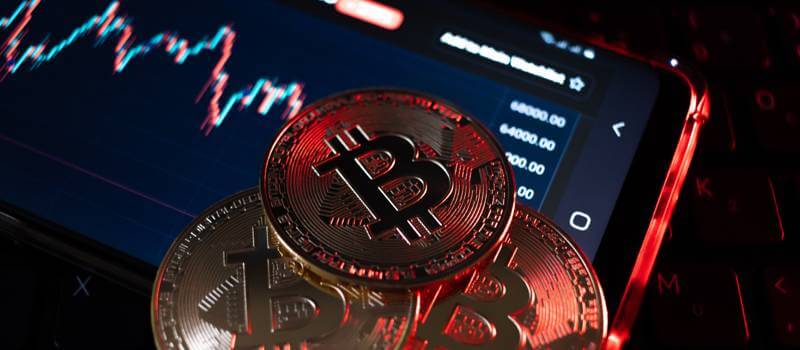
Cryptos lower, US markets with post-Christmas bang
The crypto market was mostly in the red during the final weeks of December, as the vast majority of top 10 cryptos were seen lower. US markets returned with a post-Christmas bang, with the SPX500 (+1.38%) achieving yet another record high. European stocks picked up where they left off before Christmas by finishing in the green, and oil ticked up more than three percent. Oil traders were increasingly optimistic about consumer demand for the fossil fuel as we enter 2022. As for the top cryptos: Bitcoin was down approximately 3%, trading below $50,000, as were Ethereum and XRP both down around 3%. Cardano registered losses of approximately 1%, but Terra was the biggest top ten loser, down by more than 10%. Polygon lost just over 8% of its value. The top gainers outside the top twenty crypto were Sushiswap, Icon and IOTA. AMM Sushiswap gained 10% in one day. Yet, ICON Network, a layer one blockchain from South Korea, is the top 100’s biggest winner. Its declared vision is to build an interoperable blockchain network bridging autonomous online communities and real-world enterprises.
For further detail: ICON Network focuses on delivering real-world utility by advancing hyperconnectivity through the promotion of frictionless value exchanges. By verifying transactions on its decentralized ledger, ICON can minimize the number of intermediaries and eradicate boundaries to cross-border interactions. In particular, the company focuses on the use cases of decentralized identity, blockchain payments, decentralized finance, digital certificate issuance, non-fungible tokens and several additional use cases such as e-government, elections, decentralized oracles and e-health. It gained 18% on just one day last week, reaching the 84th spot on CoinMarketCap. On the other end of the spectrum are Theta and Yearn Finance, which both dropped eleven percent, and Loopring and Curve DAO Token, each down about ten percent. Finally, Multi-Farm Capital is an experimental yield farming/profit sharing protocol developed and launched on the Ethereum blockchain. Transaction fees from trading are collected in a treasury which is then utilized to yield farm on various other blockchains. After migrating to a new contract, it’s up a mere 1,845%.
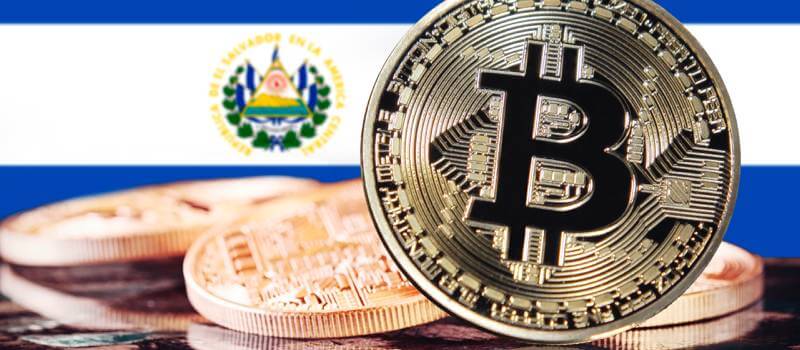
Rushing to Build a Bitcoin Payments Infrastructure. El Salvador’s Rollout – Mixed Results/Reviews
El Salvador had purchased 1,100 Bitcoins between September 6 and October 27, 2021 following the Bukele government’s decision to make Bitcoin legal tender in that country. The Finance Ministry had earmarked $205.3 million in the process: they used $150 million to establish a fund to back Bitcoin conversions at the country’s development bank (Banco de Desarrollo de la República de El Salvador), and then the government launched a digital wallet called Chivo (slang for “cool”). It also installed 200 Chivo ATMs and 50 branches to allow users to buy Bitcoin or convert it to cash, with the government absorbing commission fees. After they downloaded the Chivo app, Salvadorean users received a $30 stipend in Bitcoin, which was equivalent to nearly 8% of the country’s monthly minimum wage. Bitso, which is the largest crypto platform in Latin America, handles Chivo’s custody and exchange services. On September 7, Bitcoin became legal tender in the country and large chains in San Salvador started accepting payments in Bitcoin, including food franchises such as Starbucks, McDonald’s, and Pizza Hut; supermarkets, and electronics stores.
Peter McCormack, host of the podcast What Bitcoin Did, recently stated, “For me, [Bitcoin] is a store of value. But when I was recently in El Salvador, I was using Bitcoin I have on my phone… to buy coffee, to buy breakfast, to buy dinner. So, I was using it as a medium of exchange.” However, glitches marred Bitcoin’s September 7 rollout, and it was the case that most Salvadoreans did not have a seamless experience using Bitcoin as a payment instrument. Protesters marched on the streets because of this, and on that day, the crypto asset’s price fell nearly ten percent. It appears that the Chivo app’s performance depends on good connectivity. One citizen reported, about using the app, that “the annoying thing is that there isn’t always coverage, but, when [the app] works well, it works well.” Another, working as a barista, said that customers walk out of his coffee shop when the Chivo app is down, and that merchants’ limited adoption of Bitcoin creates uncertainty for customers. Another user reported, “I felt very insecure after I funded my account in the app, [as] there is no guarantee of a clean transaction.” He said he was having trouble paying Bitcoin to several retailers who eventually reverted or cancelled the transactions. On September 7th, the Chivo app was only available on Huawei phones, and the app temporarily went offline due to an overload in the servers’ capacity.
Several users found nefarious actors had already depleted their Chivo. One prominent attorney stated, “If someone has opened a Chivo account in your name, that wallet might be used to transfer funds from drug dealing, illegal weapon sales, human trafficking and corruption.” Cases of hacking are on the rise and the Chivo app has asked users to exercise caution to prevent fraud. The Tracoda Watch Group has tracked at least 2,000 cases of stolen identity, and El Salvador risks becoming a haven for money laundering and tax evasion, according to the World Bank and the International Monetary Fund. Interestingly, the World Bank declined to help with the Bitcoin rollout, citing environmental and transparency issues. “There is a lot of risk associated with Bitcoin and that risk will be borne by the taxpayers,” said Steve Hanke, an economics professor at Johns Hopkins University. El Salvador will also have to deal with systemic Bitcoin problems, such as transaction capacity limits. Bitcoin is “a network that isn’t stable, doesn’t have accountable actors, and doesn’t have track record of providing the kind of price stability and liquidity that a currency is supposed to provide,” said Rohan Grey from the Digital Currency Global Initiative.
Esteban de la Peña Padilla, founding partner at IBEX Mercado, said El Salvador was “as ready [for the Bitcoin rollout] as Latin Americans can be for this.” Meantime, Brock Pierce, crypto evangelist and tech investor, stated, “No one had any expectation that this would be completely smooth.” Many Salvadoreans and financial analysts are worried about the impact of Bitcoin’s price volatility on El Salvador’s inflation dynamics. In a poll by Universidad Centroamericana, fifty-four percent of respondents said that Bitcoin would accelerate price increases for essential goods. Making Bitcoin legal tender “will be equivalent to an increase in the country’s monetary supply, which will temporarily boost El Salvador’s economic activity, but will also pressure inflation higher and with that, interest rates will rise,” wrote Gabriela Siller, Head of Economic Analysis at Banco Base in Mexico. It also seems that many people are afraid because of the lack of understandable information available to citizens about what drives Bitcoin price movements.
“The population continues to reject the use of Bitcoin as legal tender… the poor downloaded the app only to use the 30 dollars to buy goods and services, not to enter the world of Bitcoin. The dollar will always be considered legal tender by households and Salvadoran microenterprises,” said Óscar Cabrera, former president of the Central Reserve Bank. However, some Chivo users took to day trading, speculating on Bitcoin’s price swings. The Chivo wallet had to restrict trading to curb speculation. “It’s become really hard to trade, convert, and even guarantee your money in dollars,” said Alexander Sermeño, a day trader and consultant. Many low-income Salvadorans converted their Bitcoin funds into cash as soon as they could, and between May and June 2021, when the Salvadorian Assembly made Bitcoin legal tender, the share of consumers holding savings in cash spiked from 36.7% to 50.4%, per a poll by the Foundation for Economic and Social Development. On September 15, anti-government marchers in San Salvador protesting against Bitcoin and the Bukele administration vandalized and set fire to a Chivo ATM.
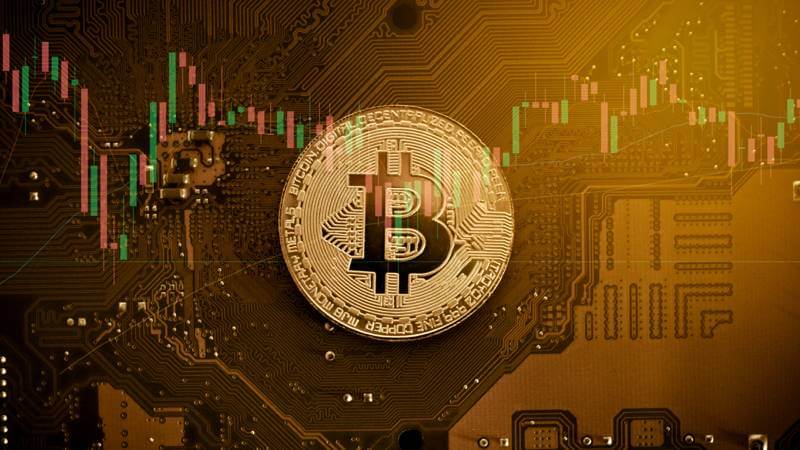
DO YOU BELIEVE BITCOIN WILL HIT $100,000 IN 2022? WE ASKED THE EXPERTS
The Federal Reserve took the steam out of cryptocurrencies at the end of the year when it made a hawkish turn which largely spared other risk assets. Looking forward into 2022, central bank policy is taking a key role in the debate about the outlook for crypto for this year. It seems much has to do with to what extent Jerome Powell’s Fed will tighten policy in order to stem inflation. Many analysts believe the answer to that puzzle will help determine whether Bitcoin follows its 60% gain in 2021 with another banner year. Another school of thought holds that as companies such as the Meta Platforms Inc. (formerly Facebook) and Apple Inc. push deeper into the metaverse, consumers will keep piling into non-fungible tokens, and that alone will push crypto higher regardless of the macroeconomic forces at play. Some previous examples of this process were the sale last year of an NFT artwork for $69.3 million at Christie’s, and the loosely organized group of crypto investors that battled billionaire Ken Griffin at an auction for a copy of the U.S. Constitution.
We asked four market-watchers to discuss their outlook for BTC and for the wider crypto universe in 2022. Here’s what we got: regarding Bullish Bitcoin Technicals – “We are bullish Bitcoin long-term, based on our long-term trend-following gauges,” Katie Stockton, founder and managing partner of Fairlead Strategies LLC, said in an email. She continued, “We assume the long-term uptrend will maintain itself and a more decisive breakout to new highs would allow for an impressive measured-move projection of approximately $90,000. For now, a corrective phase still has a hold, although there are potential signs of short-term downside exhaustion.” And in regard to the Fed and the Metaverse: Antoni Trenchev, managing partner of crypto lender Nexo, said in an email, “The No. 1 influencing factor for Bitcoin and cryptocurrencies in 2022 is central bank policy. Cheap money is here to stay which has huge implications for crypto,” as “the Fed doesn’t have the stomach or backbone to withstand a 10%-20% collapse in the stock market, along with an adverse reaction in the bond market.”
Trenchev sees a choppy 2022 yet forecasts that Bitcoin will reach $100,000 by the end of June. He also doesn’t expect tokens such as Solana and Avalanche to offer the same exponential gains as they did in 2021, but rather “these upstarts — awash with arrogance, attitude and funky narratives — will face the same scaling challenges that Ethereum and other older protocols faced. What I’m really excited about in 2022 is the metaverse. The ‘birth’ and use of the term metaverse is a beautiful mess, and it has a lot of potential. It will be one of the overarching themes: the metaverse, the infrastructure building, and then the NFTs that will make up part of the economy.” On the other hand, Jeffrey Halley, senior market analyst at Oanda Asia Pacific, explained via email that, “Although I expect the speculative zeal to continue in the crypto space, it, like bloated technology valuations, faces a much more challenging environment in 2022. The primary reason is the start of interest-rate normalization by the Federal Reserve, but with other major central banks likely to follow, as well. That will challenge the raison d’être that crypto is an alternative to fiat money.”
Halley continued, “Hanging over the crypto space is the threat of more regulation and frankly, with a new coin coming out every week which is ‘the next big thing’ and driven by speculation and not blockchain, I’m struggling to see how any of them will be. I continue to believe that cryptocurrencies are the greatest case of financial-market group-think stupidity in history. The music may keep playing for part of 2022, but the emperor still isn’t wearing any clothes.” We will see if his FUD remains what it is or if there was any truth behind his words. Finally, Philip Gradwell, chief economist at Chainalysis, reported by email that, “The race is on to be the app store for crypto. A major lesson of Web 2.0 was that consumers love platforms, and I don’t think that is going to change for Web 3.0. Currently there is no crypto platform that owns the customer relationship and aggregates suppliers. I predict that in 2022, many companies will race to build this platform, with Coinbase in the lead as it integrates DeFi and NFTs.”

BITCOIN’S PRICE WILL HIT $100K BY MID-YEAR, NEXO FOUNDER, AND OTHERS, PREDICT
In a follow-up to the previous article, Antoni Trenchev, the co-founder and managing partner of Nexo, a major cryptocurrency lender, predicted that the price of Bitcoin will be $100K by mid-2022. In an interview with CNBC early in the month, he highlighted “two simple reasons” why he is bullish about the price of Bitcoin this year. “I think [Bitcoin’s] going to reach $100,000 this year, probably by … the middle of it,” Trenchev said. First of all, he pointed out that institutions are increasingly putting Bitcoin in their corporate treasuries. For instance, the Nasdaq-listed company Microstrategy purchased 124,391 BTC for its treasury. Secondly, Trenchev expects “cheap money” is here to stay, which would boost the prices of cryptocurrencies. His company Nexo has issued more than $6 billion in credit and manages assets for more than 2.5 million users globally.
It’s no secret that the Federal Reserve is expected to raise interest rates several times this year. Wharton finance professor Jeremy Siegel recently predicted that “The Fed is going to have to hike many more times than what the market expects.” Discussing the implications of rate hikes further with CNBC, Trenchev added, “I quite frankly think that as soon as we see a rate hike, it’s going to be a dip into equities and the bond market — and quite frankly, the last few years, we haven’t seen much political will to … power through any sort of correction in the traditional financial markets.” The president of El Salvador, Nayib Bukele, also recently predicted that the price of Bitcoin will reach $100,000 this year. Meanwhile, the CEO of Microstrategy, Michael Saylor, foresees Bitcoin’s price reaching $6 million. However, some people remain skeptical about the price of the cryptocurrency, including Bridgewater Associates founder Ray Dalio.

Is It Time to Be Bullish on Shiba Inu Again?
Meme tokens are known for having the ability to fetch their HODLers with astronomical returns within short spans of time. Shiba Inu is the market’s second-largest meme-coin, and it has time and again delivered on such lofty expectations. The debate surrounding whether or not meme-coins make good investment options is loaded with differing viewpoints. Usually, market participants who do not advocate coins from this category either have never traded them or they buy, book profits, and then quickly sell. On the other hand, ‘loyal’ holders stay within the ecosystem, come what may. To a fair extent, it seems more than likely that the Shiba Inu profit-booking season has likely concluded as swing traders have mostly been filtered. Even so, staunch holders currently compose the majority of Shiba’s buyers.
The number of profitable addresses for Shiba holders witnessed a steep decline during the November-December period. Presently, this line has flattened, and thus, it becomes clear that longer-term holders are clinging onto their positions and have not exited the SHIB market lately, despite the monotonous price trend. By and large, this is a good sign for the coin. And then, so is the strength of incoming whale buying: new participants entering the market with huge buys. One WhaleStats’ recent tweet highlighted that the prominent ETH whale “Gimli” bought 110,000,000,000 SHIB worth approximately $3,624,500. To be sure, it should be noted that transactions of similar volumes in the past had triggered the most prosperous SHIB rallies. In fact, in the September-October period right before Shiba Inu’s massive uptrend, it was noted that a particular whale had purchased over 6.17 trillion SHIB tokens. That same whale ended up purchasing another 276 billion tokens in succession just after that purchase in three distinctive transactions.
So, expecting SHIB to react positively to Gimli’s recent purchase wouldn’t be merely speculative, but would be a sound expectation. Sure enough, by the end of last week, the sentiment was gradually seen flipping towards the bulls. In fact, ITB’s data highlighted that SHIB’s bull to bear ratio has been more than 1 over the past few days, which implies that the bulls have started asserting command in the market. Interestingly, the pendulum of the trades per side metric was also seen oscillating definitely more towards buy than sell at the same time. By Friday morning, the buy-sell difference reflected a positive value of 80 billion tokens. If this buying spree continues, SHIB’s price-rise would be almost inevitable. In fact, many seasoned traders believe that the odds of this meme-coin surging even amidst its current bearish trail remains quite a good possibility. In all, SHIB’s short-term prospects seem to be quite appealing at the moment.

Vitalik Buterin Gives An Estimate On Ethereum 2.0’s Completion Status
Speaking on the Bankless YouTube channel, Vitalik Buterin gave his best opinion on the timeline for the completion of Ethereum 2.0. During the interview, Buterin covered various topics, including what makes him happy, maximalism, and layer 1’s. But the main theme of the discourse centered around the development of Ethereum 2.0, and in particular, the “Endgame” blog article he posted in early December 2021. This piece had set out a plausible roadmap to realize his vision for a trustless and censorship-resistant chain. During the recent Bankless interview, Buterin talked in great detail about the updated path to Ethereum 2.0. He explained that on December 1, 2021, the first anniversary of the Beacon Chain launch, his tweet included an updated roadmap diagram which follows five distinct groupings labeled: the merge, the surge, the verge, the purge, and the splurge.
The merge refers to the convergence of the two parallel Ethereum chains. This event will mark the transition from Proof-of-Work to a Proof-of-Stake chain. The surge relates to increasing scalability through rollups and sharding. Rollups are scaling solutions that execute transactions off of the main chain, but with the proof of transaction made on layer 1. Sharding can be thought of as dividing traffic across 64 new chains, thus spreading the network load. The verge is about stateless clients, which is a scaling methodology intended to reduce the state size of Ethereum. Doing this will make node operation much more efficient. This ties in with the purge, which seeks to enhance node efficiency by eliminating historical data. “New accounts are continually being added and new smart contracts are being deployed. Therefore, by design, the state size of Ethereum keeps growing ad infinitum,” Buterin stated.
Finally, the splurge signifies going all out on extras, including building censorship resistance functionality. So then, just how far along is Ethereum 2.0? When asked to grade roadmap progress to date, Buterin said, “We’re currently about halfway there.” He then spoke of the next milestone, the merge, being 60% complete. “I would say around 50. I’d be willing to go past 60 once the merge is fully complete, and I’d be willing to go past 80 once we have a full sharding implementation.” According to Consensys, the merge is expected to happen in Q1/Q2 this year. But delays setting off the difficulty time bomb suggest this may not occur on time. The difficulty time bomb will make mining ETH progressively more challenging until it’s uneconomic to do so at all. This process intends to phase out miners gradually. But it’s unclear how long a “gradual” phase-out will take. Buterin mentioned that all five roadmap categories are being worked on simultaneously rather than in distinct stages with clear cut-offs in-between.

Shark Tank’s Kevin O’leary Explains Why He Is Bullish on NFT’s
Even as NFTs have managed to capture the attention of the entire globe, the question on everyone’s mind is, can they outperform the world’s largest cryptocurrency? Shark Tank’s Kevin O’Leary, aka “Mr. Wonderful,” believes so. Appearing in a recent interview with CNBC, O’Leary pointed out the crypto market has been in awe of the NFT space. With almost every celebrity diving into the non-fungible asset pool, the crypto world has witnessed increased adoption. Even though it is relatively new to the digital world, the NFT space has quickly managed to score big. O’Leary expressed his bullishness towards these tokens and suggested that they had the potential to become “much bigger than Bitcoin” since they had the ability to lure in more capital when compared to Bitcoin. O’Leary believed they could do so since they had the ability to tokenize or digitize physical assets like watches, cars, and so on. He further added, “You’re going to see a lot of movement in terms of doing authentication and insurance policies and real estate transfer taxes all online over the next few years, making NFTs a much bigger, more fluid market potentially than just Bitcoin alone.”
Despite laying out a narrative that NFTs would become much bigger than Bitcoin, O’Leary suggested that he would be investing in both of these markets. The Shark Tank investor wasn’t always a fan of crypto. However, O’Leary eventually became smitten by Bitcoin, and this caused him to invest in WonderFi. When the firm acquired the prominent crypto exchange Bitbuy for a whopping $161.8 million in cash and shares, this was proof enough that O’Leary was solidly invested in both the traditional crypto-asset market as well as NFT’s. O’Leary stated during the interview with CNBC, “We’ll see what happens, but I’m making that bet and I’m investing on both sides of that equation.” The Shark Tank investor possesses a variety of cryptocurrencies in his portfolio. Previously, Mr. Wonderful revealed that he held “a lot of Ethereum.” Along with this, his portfolio included Solana [SOL], and Polygon [MATIC].

HONG KONG TO SET A PLAN FOR CRYPTOCURRENCY REGULATIONS BY JULY 2022
The Hong Kong Monetary Authority, which is the central banking institution of the city-state, intends to establish a new regulatory regime for digital assets by this coming July. The special administrative region of China will be following Singapore’s path to become a cryptocurrency hub for that part of the world. According to a recent report by Bloomberg, Hong Kong’s central bank will approach the cryptocurrency industry in three manners: protect local investors, develop comprehensive rules for authorized institutions regarding how to deal with digital assets, and finally, pay special attention to Stablecoins. The Hong Kong Monetary Authority (HKMA) will be putting Stablecoins under enhanced scrutiny. In a recent press release, the institution said such assets present “possible risks regarding monetary and financial stability.” The central bank noted it had been closely monitoring the development of these assets and “would like to proactively share” its views with the broader society. The Chief Executive of the HKMA, Mr. Eddie Yue, revealed the bank is waiting for feedback from stakeholders about their recent proposals.
He added that the HKMA will draw up a “risk-based, pragmatic, and agile regulatory regime” for the cryptocurrency industry. Currently, the special administrative region of China employs a so-called “opt-in” rule for local digital asset exchanges, which means they can apply to get supervised. Not long ago, Joshua Chu – a consultant at ONC Lawyers – described this model as ineffective, and the government should consider changing its policy. In May 2021, the local authorities intended to apply a rule that would only allow millionaires to trade with cryptocurrencies. This amounted to about seven percent of the total population of Hong Kong. Back then, Christopher Hui – Hong Kong’s Treasury Secretary – called this initiative a well-thought decision. The week before last, the cryptocurrency exchange Coinsuper became one of the hottest topics in the city-state when dozens of its clients complained that they could not withdraw funds. Some affected users had even contacted the police to seek a solution. Executives of Coinsuper could not be located to give more details on the matter. What made matters worse, was that the administrator of the company’s telegram chat stopped responding to queries about failed transactions over a month ago. Despite all these issues, the trading application, and the website of Coinsuper, remained functional.
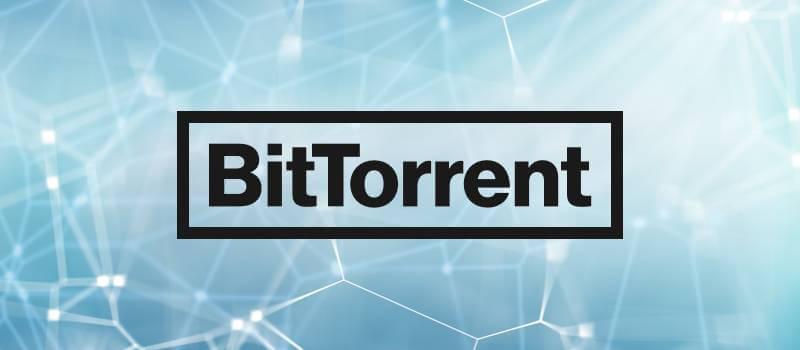
BitTorrent Token Dominates the Weekly Crypto Charts on Crypto Bubbles
Rather unexpectedly, BitTorrent token (BTT) dominated the crypto weekly charts during the middle of January. Its history: BitTorrent had a decent run until April 2021, when it plummeted after the Bitcoin crash in May 2021. At that time, it dipped drastically and remained beaten down during the entire second half of 2021. Its price seemed like it was on the path to dwindle down to nothing. However, BTT is now scratching and clawing its way back to former glory, thus, so far changing its fortunes in 2022. The sudden spike came after BitTorrent announced it had consolidated its tokens to a 1:1000 migration ratio. The consolidation process began on January 10, 2022 and is currently ongoing. When the consolidation period is complete, BTT is going to be renamed BTTC. The token was in its prime before May 2021. It had touched an all-time high of $0.01356626 on April 05, 2021. However, the market conditions weren’t kind to BTT after the BTC crash, and it is still down -81.1% from its ATH. The token had disappeared from all charts after May, and it only came back to life in December 2021, after rising 52% in a single day on December 7th.
BitTorrent is now seeing a surge in buyers, and the consolidation process has brought the token back to life. The Crypto Bubbles website shows the BitTorrent token making an entry and dominating other tokens in terms of price rise. Investors believe that its price may have bottomed out and this new upward spiral is just in its beginning stages. If BTT continues its upward trend for a few more weeks, it could deliver decent returns to investors who have taken entry positions recently. However, it is important to note that other investors believe that this recent spike in price could be a one-off and so it is advisable to remain cautious. Just what is BitTorrent Token (BTT)? BitTorrent is a popular software that has been around for close to three decades. The software is used to download movies, songs, and other items which link to pirate websites. However, when pirate websites faced a crackdown, this resulted in BTT’s declining popularity. Its saving grace came in 2018 when Justin Sun, the founder of Tron, acquired the company for $180 million. Since then, BTT entered the blockchain industry and currently has around 200 million active wallets.
Even since December 2021, the token is down yet again – about twenty-four percent in the last 30-trading days. However, its market cap has reached $2.3 billion with a trading volume of $309 million. At the time this article was written, BitTorrent was trading at $0.00255770 and was up +4.5% in the prior twenty-four-hour trading period.
Jack Dorsey to Launch “Bitcoin Legal Defense Fund”
Open-source Bitcoin developers are often subject to “litigation” and “threats,” and Jack Dorsey, the CEO of Block and ex-CEO of Twitter, has proposed creating a nonprofit organization to protect their rights and interests. Dorsey explained via email to the Bitcoin-dev mailing list on January 12 that the nonprofit’s intention would be to defend Bitcoin developers from these threats. He hopes to help give support to these contributors and maintainers, so they don’t capitulate. This is something they often do now since many lack legal support. “The Bitcoin Legal Defense Fund is a nonprofit entity that aims to minimize legal headaches that discourage software developers from actively developing Bitcoin and related projects such as the Lightning Network, Bitcoin privacy protocols, and the like,” Dorsey’s email read. In October 2021, Bitcoin Core maintainer Jonas Schnelli stepped down from the project, citing increased “legal risks for Bitcoin developers.” He suggested at the time that new contributors “join anonymously.” In December, two other developers also left the project. Samuel Dobson said earlier in the month that he would no longer maintain Bitcoin Core, after three years of dedication, so that he could focus on his Ph.D. This was followed a few days later by John Newbery, who stepped away from working on Bitcoin development, saying that he was “moving on to other things.”
Dorsey’s initiative has plans to prevent such losses by “finding and retaining defense counsel, developing litigation strategy, and paying legal bills,” per the email, which was co-signed by the Fund’s board, Chaincode Labs co-founder Alex Morcos, and academic Martin White. “This is a free and voluntary option for developers to take advantage of if they so wish,” the email continued. It went on to say, “The Fund will start with a corps of volunteer and part-time lawyers. The board of the Fund will be responsible for determining which lawsuits and defendants it will help defend.” According to the email, the Fund’s first activity will be to take over and coordinate the defense of the Tulip Trading lawsuit, in which Craig Wright claims he is a victim of theft of the private keys connected to billions of dollars’ worth of Bitcoin that were drained in the Mt. Gox hack. Many defendants are prolific Bitcoin developers and Bitcoin Core maintainers, including Schnelli, Wladimir Van Der Laan, Marco Falke, Pieter Wuille, Peter Todd, and Matthew Corallo, among others. The email also said that the initiative isn’t seeking additional funding at the moment, but that it may do so if needed in the future at the board’s discretion.
Northwest Arkansas Offers $10,000 in Bitcoin to People Who Settle in The Region
Northwest Arkansas is widely regarded as one of the top places to live in the United States due to its job opportunities and low cost of living. Despite its advantages, the region consists of a mere 540,000 inhabitants. In hopes of attracting more individuals who will settle in the area, local authorities have launched a cryptocurrency program. The Northwest Arkansas Council has stepped into the world of crypto by giving away $10K worth of Bitcoin to professional workers. The only condition: they have to settle in the region. But still: move-in and Get Bitcoin! According to the council, tech professionals and entrepreneurs can apply for $10,000 in Bitcoin if they move to live there. Nelson Peacock, the President and CEO of the Northwest Arkansas Council, presented more details on the offer: “We’re offering remote tech professionals and entrepreneurs $10,000 in Bitcoin to bring your talents to the region. Why Bitcoin? Northwest Arkansas is experiencing explosive growth in the tech sector, specifically within blockchain-enabled technologies, and this incentive embraces the growing trend of cryptocurrency as a payment option by employers.”
It is worth noting that people could still choose to receive the $10,000 in cash instead of in the form of Bitcoin. Additionally, the authorities are also giving away a mountain bicycle to those willing to call Northwest Arkansas their new home. The bike is meant to help the newcomers, since the area consists of hundreds of miles of biking trails that have made outdoor enthusiasts flock to this part of America. This announcement follows last summers by the Mayor of Cool Valley, Missouri – Jayson Stewart – who revealed his intentions to give $1,000 in BTC to each of the town’s 1,500 residents (either $500 in cash or $1,000 worth of Bitcoin). At that time, the politician called cryptocurrencies “digital gold,” and expressed his opinion that the asset class could transform the lives of the inhabitants and make them wealthy. “I have friends whose lives have been completely changed, like going from working a regular nine-to-five job, to being worth over 80 million dollars in a matter of a few years,” Stewart had said. Nonetheless, his cryptocurrency plan came with a catch: recipients would not be able to sell the BTC for five years. His thinking was that this way, residents would get the greatest benefit, as the price of the leading digital asset might hit “half a million dollars” by then, the mayor had said.
Outlining India’s apparent obsession with Shiba Inu
Shiba Inu is the market’s second-largest meme coin, and it had a wild few days this month. After posting an 11% rise in DoD, it became apparent that SHIB was waiting for Bitcoin’s momentum to aid it in recovering from its downtrend phase. Despite its macro-downtrend, market participants’ interest in this coin has been on the rise. A host of exchanges all across the globe have started listing Shiba Inu to keep up with the growing demand for the coin. Looking more closely at how the coin is faring in India, one could arguably ask the question: is Shiba Inu India’s favorite breed of coin? Recently, exchanges in India are jumping at the opportunity to join the SHIB bandwagon. Giottus, for starters, launched SHIB deposits last week. Notably, back in mid-December, the platform also added support for Floki Inu – another prominent dog-themed crypto meme. Giottus was launched back in 2018, and notably, it had a very rough start, for it went live right after the RBI ordered financial institutions to cut ties with entities and individuals dealing with cryptos.
At that time, the exchange was set to launch as a spot exchange, but owing to the RBI ban, it was forced to start operating as a P2P exchange. However, after India’s Supreme Court revoked the RBI ban in 2020, Goittus finally managed to start gaining traction, and it began recording growth in trading volume and monthly registrations. Prior to last week’s Goittus announcement, Shiba Inu had been listed by major Indian exchanges including the likes of Unocoin, ZebPay, and CoinDCX. On ZebPay, for instance, this token managed to stand right behind the big coins in terms of volume. In fact, a recent Economic Times’ report noted, “Among the tokens, behemoths like Bitcoin and Ethereum were the most traded on the platform, followed by altcoins like India’s polygon (matic), the meme coin Shiba Inu and the basic attention token (bat).” The SHIB obsession was at its peak during the festive season as Indians gradually opted to buy this meme coin over gold and other traditional assets. Interestingly, the Indian Parliament’s Winter session ended in December without introducing the much-awaited bill to regulate digital assets. Despite the hazy crypto regulatory environment, Shiba Inu continues to hold a prominent place in the wallets of Indian HODLers. Traditional media outlets are paying heed to this token, and they are trying to stay abreast of the cultural trend associated with its popularity. With a mainstream focus on Shiba Inu, its status could skyrocket this year.
Ripple Pushing Hard at SEC Like Never Before, States Jake Chervinsky, Head of Policy at US Blockchain Association
It is quite important the world understands that Ripple, together with the XRP army, are hitting hard at the U.S. Security and Exchange Commission (SEC) like never before. Jake Chervinsky, the U.S. Blockchain Association’s policy chief, has stated in a recent tweet that irrespective of how the crypto community views Ripple as a company, there are several issues of utter importance which everybody would admit. One is that Ripple is giving the regulator an extremely tough time, even tougher than Tesla’s chief, Elon Musk, the world’s richest person. Secondly, Chervinsky noted: “They’re (Ripple and XRP army) the leading dispute on securities law, if only b/c they’ll fight to the death unlike those who caved & settled.” For context, in the past, the SEC had filed lawsuits against some companies and threatened others with serious litigation. In many of those situations, the defendants conceded, fearing the rigor of state regulators. This time, Ripple has been pushing hard at SEC from the very start: hard enough where most who know the case well would say they have maintained the upper hand in the proceedings throughout the lawsuit.
Of importance to note is that at the time the SEC had initially filed its lawsuit against Ripple, many had thought it was certainly Ripple that was in hot water. Since then, Ripple has turned the tables and many observers believe it is now the SEC itself that is in hot water. Recently, the court has denied SEC’s “privilege” argument to protect certain documents. As a consequence, the SEC is now compelled to produce a draft email, relating William Hinman’s 2018 speech. Many in the community are considering the recent court ruling a major victory for Ripple. Why is the outcome so crucial? If Ripple wins the lawsuit, there would be a great loss of face for SEC. On the contrary, if SEC succeeds, the entire crypto community would be under serious threat.
Analysts Give Their Summaries and Predictions for Crypto In 2022 – More Bloodshed?
Even though Bitcoin and other cryptocurrencies have been able to surge in value in recent years, generating billions of dollars for investors and promising a new kind of wealth, with the recent downturn due to regulatory pressure on cryptocurrencies, many analysts are suggesting that cracks might soon appear in the armor. In the federal digital currency report released the fourth week of January, analysts said they expect cryptocurrencies to encounter challenges from regulation over the coming years. The report said that U.S. lawmakers and financial regulators have been looking into the legality of cryptocurrencies, even as regulators in several countries have already warned investors against investing in digital assets. It suggested that many investors have been buying into digital currencies only because they are able to easily monetize them with little work or effort. Recently, U.S. regulators have been ramping up their warnings against such easy money. The report went on to say that such easy money alone is not enough to justify the sky-high valuations of cryptocurrencies, and that while blockchain technology may be one of the biggest catalysts for large future innovations, at current prices, it can’t live up to the expectations associated with cryptocurrencies.
“The cryptocurrencies have no material impact on the real economy and the banking system, so valuations have been predicated upon a hoped-for financial revolution that we do not believe will happen,” the report said. Cryptocurrencies like Bitcoin are created through a process known as “mining,” which involves using computers to solve difficult mathematical puzzles. As more and more people mine for cryptocurrencies, it has fueled a massive boom in computing power and innovation. Cryptocurrency has received an incredible amount of attention in the last year, both in media and online, in general. While there has been a lot of hype and excitement around the market, there have also been many setbacks. The cryptocurrency market is a volatile one, and it will continue to be so for the foreseeable future. With this in mind, it’s worth taking the time to look back at the year that has been and see just what has happened.
Fundamental shifts in economics and technology have been the driving force behind the cryptocurrency market, and overall, Bitcoin has performed almost exactly as expected, given a number of fundamental factors. These factors include the lack of regulation, the uncertain regulatory environment, and the volatility of its value. But while most other cryptocurrencies have mirrored Bitcoin’s performance in a broad sense, there have been many exceptions. Some currencies have become more stable than others; some have increased in value so much that they are now viable options as a form of payment, while others have utterly collapsed. As usual, Bitcoin is the market leader in terms of market capitalization, but there have been two new challengers to its status: Ethereum and Ripple. Bitcoin is still the largest cryptocurrency when measured in terms of market cap, and though it may decline, it will still be the largest for many years to come.
Although there have been many currencies like Bitcoin, none of these have been as profitable to mine as Ethereum. The crypto community has been buzzing about this new form of currency, and it’s only getting bigger. It uses the same blockchain technology that Bitcoin does but goes a step further by allowing users to create their own programs and applications within their platform. These apps are known as “smart contracts” and have been making waves in the crypto community lately. In order to create a secure blockchain, you need computers all over the world competing with one another. This means that every computer on their network has to make complex calculations in order to update the global ledger. This process consumes a lot of time and hardware, making it difficult for average users to compete with professional mining operations.
Ethereum Price Prediction: ETH/USD Approaches $3000 Support
Ethereum Price Prediction – January 18: Ethereum price predictions reveal that ETH is approaching a crucial support level which could take the second largest digital asset by market cap to the downside. ETH/USD Market Key Levels: During the middle of last week, Resistance levels were $3600, $3700, $3900 while the Support levels were $2800, $2700, $2600. In the past, ETH/USD had been able to find some support at the $3083 level, but since this level has been visited two times recently, all bets are off. After touching the daily high of $3246 during the European session last Wednesday, Ethereum now continues to face the downside as the coin slides below its 9-day moving average. Many traders were expecting the coin to resume uptrends, but the 9-day moving average was not able to cross above the 21-day moving average. This was a sign of weakness and capitulation, and it became apparent by the end of last week that more heartache will follow.
Moreover, any further bearish drop below the lower boundary of the channel will likely roll the market down below the support levels of $2800, $2700, and $2600. There is little possibility of any bullish surge coming anytime soon. Meanwhile, the Relative Strength Index (14) is below its 40-day level and staying there will most probably cause the coin to go to ever-increasing lows. Against Bitcoin, the Ethereum price is currently facing the downside as the bears continue to take over the market. As it was towards the end of last week, ETH/BTC had been trading at 7452 SAT and the bulls couldn’t push the price above the 9-day and 21-day moving averages. However, if the market crosses below the lower boundary of this channel, supports may very well be below 7000 SAT, with no firm bottom in sight. Similarly, once the Relative Strength Index (14) crossed below the 40-level, it firmly suggests that the market will continue down into the negative.
Crowdfunding Is Broken, Will Bitcoin Fix It?
This is a guest post by Mick Morucci. Opinions expressed are entirely his own!
Crowdfunding is now a powerful mechanism for innovation and supporting social enterprises, and platforms like Kickstarter and Indiegogo have spearheaded the web 2.0 crowdfunding movement, which has led to the creation of several billion-dollar tech startups, like Oculus, and have raised millions for thousands of causes. Through these platforms, online communities have been able to join forces and mobilize resources at an unimaginable speed and scale, but only up to a point. Crowdfunding today is dramatically narrowed by its reliance on legacy finance, which limits the vast majority of the world from accessing it. The crowdfunding revolution that was started by the internet can now be brought to the next level with Bitcoin, which can dramatically increase the size of the “crowdfunding pie,” and lead to an unimaginable impact on lives all around the globe.
Crowdfunding’s major issue is its reliance on the legacy financial infrastructure that is not only costly but globally fragmented. If we look at the major crowdfunding platforms out there today — GoFundMe, Indiegogo and Kickstarter — they only operate in roughly 30 countries. And all of these are from within developed economies. The main reason for this is their reliance on payment providers like Stripe, which offer limited reach due to the highly fragmented global payment networks, and an exclusive regulatory financial system. This also means that the costs of operating crowdfunding in this network are very high due to the many mediating third parties involved. The average crowdfunding platform charges a 7% fee per successful project. Another limitation of this reliance on legacy financial infrastructure is that so little can be done with it on the financial rails! Take, for example, the fact that with current crowdfunding platforms there is a limit of $1 or even $5 per donation. What if, instead, we allowed anyone to fund cents, microcents, or nanocents to incentivize more people — i.e., the “crowds” — to donate?
Put together, the status of crowdfunding currently is anything but accessing the involvement of the “crowds.” This tight reliance on legacy financial infrastructure has made some crowdfunding platforms move to a so-called “web 3.0” model. For example, Kickstarter has decided to move from its reliance on Stripe, to creating its own crowdfunding protocol on other blockchains. This makes a lot of sense for equity-based crowdfunding, which can enable the platform, and others, to invest in new companies and their ideas. It thus soon becomes apparent that a global donation- and reward-based crowdfunding, along with peer-to-peer lending, can only make sense using the asset with greatest global adoption worldwide, and that is Bitcoin. In 2021, you may have noticed the spawning of crowdfunding projects featuring social and humanitarian projects in emerging economies. A popular one that went viral was Bitcoin Smiles, raising 1.88 BTC for supporting dental care in El Zonte.
Another recently launched project is Kivéclair, a development project that educates people about Bitcoin in the Democratic Republic of the Congo. This project raised 50% of its target. These are only two of the several project initiatives supported by the team at BTC Pay Server, which helps with the self-hosting of the site and its configurations. These use cases are highlighting the need for a seamless, global crowdfunding experience, enabled by Bitcoin on Lightning and supported by the Bitcoin community. More importantly, these examples are showcasing that the Bitcoin community isn’t just about HODLing but about GIVLing. It is all about sharing love and; after all, many of us became Bitcoiners thanks to a friend or family member gifting us some Bitcoin.
Bitcoin Crashes Below $40,000; What’s Going On?
The Crypto market tumbled lower on the Friday of the fourth week of the month, and continued its slide most of the following weekend, with the market cap below the $2T and $1.9T marks. In addition, Bitcoin dove beneath the $40,000 mark – dropping to its lowest level in 5 months.
Meanwhile, Ethereum has also dipped below $3,000. So, just what is the current state of the market? Many were hoping that the plethora of $100,000 BTC predictions by the end of 2021 would hold true. Well, 2021 ended disappointingly for the market, and instead, Bitcoin ended the year at a disappointing $47,500. Adding sea salt to the wounds, the overall market has been very sluggish so far in 2022. It can be difficult to remember that just a little over two months back, on November 10, Bitcoin reached its all-time high of $68,789.63. However, it has dropped almost 45% since then, and now, many traders on Twitter pointed out that BTC has formed a double top head-and-shoulders pattern. This might indicate that the bottom could be at $30,000.
Could it be that the much-feared Russian crypto ban is the reason behind this slump? With 11% of the average monthly hash rate, Russia is the third-largest Bitcoin miner in the world, after the U.S. (35%) and Kazakhstan (18%). However, it looks like the country has no interest in being a mining haven. The Bank of Russia published a paper entitled “Cryptocurrencies: Trends, Risks, and Regulation.” In this document, the Bank proposes a blanket ban on mining activities since it’s a “wasteful use of resources.” The writers of the document note that Russian citizens transact around $5 billion a year with cryptocurrencies and Stablecoins, but they believe this is a bad thing because of crypto’s volatility, which leads to investor risk. The document draws the conclusion that: “The spread of cryptocurrencies could make people withdraw their savings from the Russian financial sector and, subsequently, decrease its capability to finance the real sector and potential economic growth, reducing the number of jobs and potential for household income increase.”
It could be that crypto has already braved Chinese FUD, Indian FUD, and now it will be made to endure (and overcome) Russian (and American?) FUD. Buckle up and hold onto your hats!!
VOLATILITY MAKES THE WORLD GO AROUND
Bitcoin
The slide continued during the last week of January. Bitcoin dipped to the lowest level in five months below $39k on January 21, 2022. This is the second time this year that the world’s largest digital currency by market value has fallen below $40, 000. Following the dip in the value of cryptocurrencies, nearly $600 million was liquidated in 12 hours. It was oversold for the first time since May 2021. As a result, not less than $200 billion has vanished from the market in hours. Bitcoin’s price behavior has affected the whole market, as literally all the cryptocurrencies are in the red territory. About $1.5 trillion has evaporated in total cryptocurrency market prices since November. Bitcoin, the leading cryptocurrency, was down 18.21% and was trading at $34, 935 during the intraday.
By January 23, bitcoin had plummeted below $33, 000, a new six-month low which caused a lot more pain for over-leveraged traders. It was reported that bitcoin was fighting to stay above $35, 000 in the early hours of Tuesday, however, the asset quickly lost the battle as it plummeted by more than $2, 000 to its lowest price level since July. Coinglass data shows that the liquidation jumped over $100 million in the past hour since BTC’s latest dump. More than 100, 000 traders have been wrecked in the past day.
As of January 23, the bitcoin mining difficulty stands at 26.643 trillion at an average hash rate of 190.71 per second. The mining difficulty recorded major dips after China imposed a ban on crypto mining last year. The data from BTC.com further shows that the mining difficulty will continue increasing in the next 12 days. The platform estimates that this metric will reach 26.70 trillion within this time.
By the afternoon of January 24, bitcoin broke out in a feeding frenzy, raking up over $37k after falling to its lowest point in the same morning. It shot back to $36, 000 on Tuesday. Moreover, on the month’s last Saturday, Bitcoin moved higher as crypto markets rebounded. It regained its upward momentum as the bitcoin bull appeared to have re-entered the race. BTC/USD rose to an intraday high of $37, 925 following a low of $36, 211.11.
ETHEREUM
As of 24 January, Ethereum’s price continued struggling. It started a major decline after there was a close below the $3000 level. It traded below the key $ 2500 support zone to move into a bearish zone. The price traded below the $2, 400 level and settled below the 100 hourly simple moving average. It is speculated that if Ethereum fails to start a recovery wave above the $2, 550 level, it could continue to move down. A downside break below 2250 might start another strong decline. Any more losses could push the price towards the $2000 level.
ETH bounces 10% after touching the $2200 support on 24 January. By 25th January, it moved toward the critical resistance at $2550, where the price was previously rejected. Moving above this level into support, it would have a good chance to go even higher and recover some of the most recent losses. It is also reported that Ethereum has scrapped old terms like “Ethereum 1.0” and “Ethereum 2.0” in an attempt to avoid confusion in the future over terminology on its network. According to the developers, the upgrades will now be referred to as the “execution layer” and “consensus layer.” The change in name is necessitated by the intention to reduce the confusion and misconception associated with ETH 1 and ETH 2.0.
Ethereum moved slowly higher towards the $2,500 and $2 550 resistance levels. There was a move above a major bearish trend line with resistance near $2,500 on the hourly chart of ETH/USD. There was a clear move above the 23.6% Fib retracement level of the recent decline from the $2,547 swing high to $2,160 low. Also, in the News this Week on Ethereum, below are some of the headlines from kelscrypto.com:
XRP
On January 23, XRP experienced a free fall-off in its stances. It traded between $0.62 and $0.59 lines at a percentage rate of about 1.36 positives. In comparison, Ripple XRP’s trending outlook remains bearish as placed against Bitcoin until the present. By 26 January, the Ripple (XRP) was unable to develop the upside momentum above $0.70 as the coin remained at the downside. The Ripple price was seen heading towards the 9-day and 21-day MAs. Moreover, a recent report shows that Dogecoin XRP saw the largest increase since January 1, 2021. Ripple business executive Brad Garlinghouse proclaimed via Twitter Wednesday that Ripple has bought back its Series C shares at a $15 billion valuation.
XRP is at the top of the list of under-bought altcoins as according to the data redistribution of funds in the market, XRP is able to receive the lowest volume of inflows. This is a blessing in disguise as the coin has potentially entered the opportunity zone. On January 28, Ripple price prediction showed that the XRP is down by 2.12% in 24 hours as the market value goes below $0.60. XRP opened on 28 January with the market price of $0.06 before giving a bearish signal. The Ripple price continues to demonstrate a sign of weakness across its markets. According to the daily chart, its market is down by 2.12%.
XRP market moves in ranges over the week trading days’ session at a lower spot. It seems that pressure to the upside is relatively ongoing.
ADA
Cardano spiked to a six-week high on January 18th at $1.65 and yet is among the most harmed assets. ADA declined by 45% in four days from a local peak to $0.92 on January 22nd. Although it has recorded some of its lost ground and trades above $1, it is still about 25% down on a year-to-date basis. Nevertheless, the recent price plummets have not deterred large investors from accumulating more portions of the assets. According to data from Santiment, addresses holding between 10, 000 and 1, 000, 000 tokens increased their bags by nearly $55 million worth of ADA in less than two weeks. Holding rose to more than 110% in 11 days.
Over the past two weeks, Cardano’s blockchain load has remained above 90%, and it peaked at 94.1%. However, this did not affect the scalability of the blockchain. Cardano is currently working on boosting scalability through the Hydra upgrade expected to debut in the year.
The post <h5>Monthly Newsletter</h5> <h3>The Digital Asset Landscape January 2022</h3> appeared first on JP Fund Services.




























